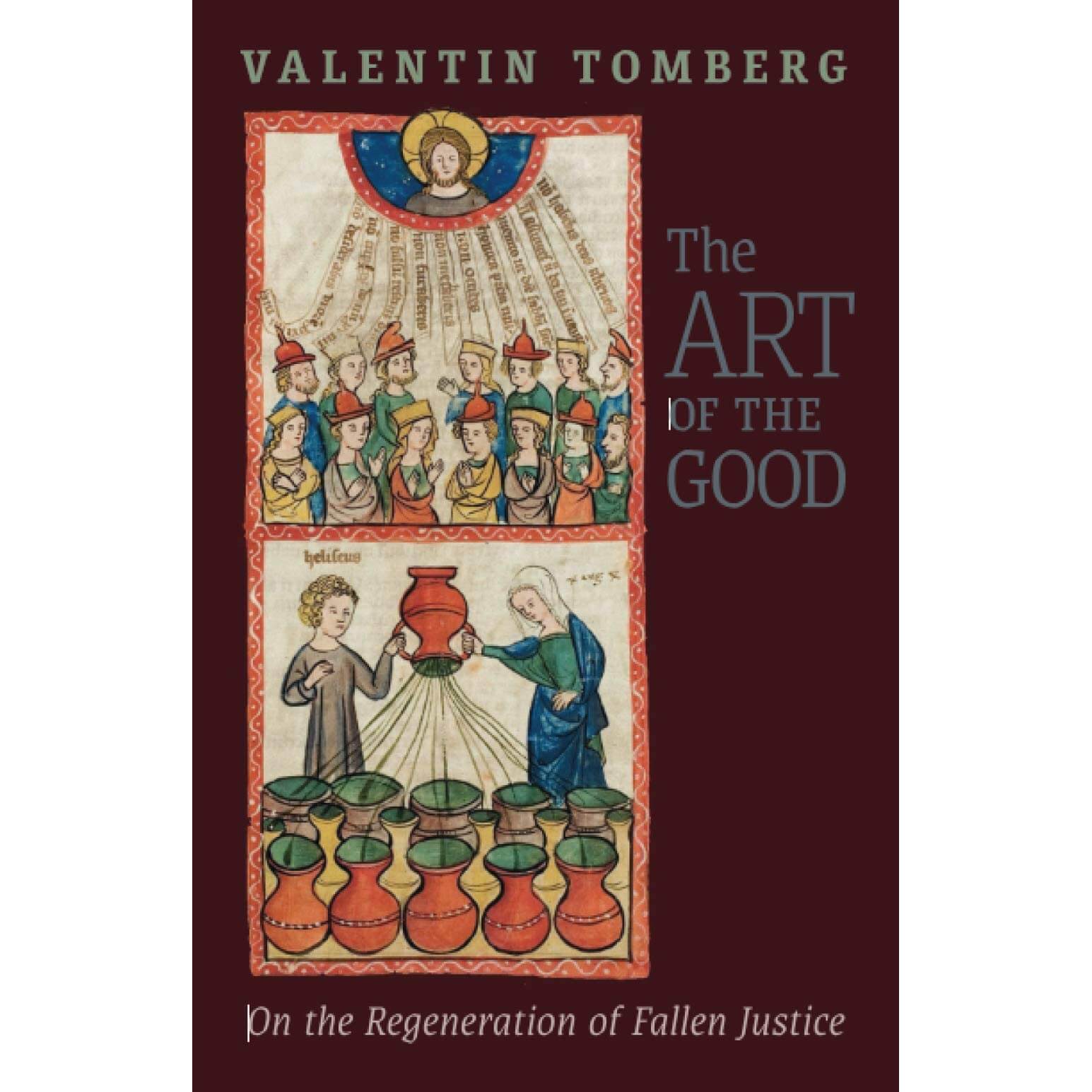Justice Returns to the Sources

The Art of the Good. Valentin Tomberg, translated by Stephen Churchyard and James T. Wetmore. Angelico Press, 2021.
Fiction will never really be able to compete with the strange and fascinating figures of oddity and genius who populate history. Angelico Press, which specializes in “counter, original, spare, strange” writers, introduces us to Valentin Tomberg.
Tomberg was a pilgrim who made many stops on his journey. Born to a Protestant family in St. Petersburg, Russia, in 1900, he started studying law at the University of St. Petersburg in 1917 but was forced to flee to Estonia because of the Russian Revolution. There his mother was killed by the Bolsheviks, but he stayed for nearly twenty years until moving to the Netherlands in 1938. The by-then-Eastern Orthodox but Rudolf Steiner-inspired Tomberg worked there until moving to Cologne in 1944 to study with the legal scholar Ernst von Hippel. There amid the ashes of Nazi Germany he wrote a doctoral thesis titled “The Degeneration and Regeneration of Jurisprudence” and also entered the Catholic Church. The polyglot scholar (he was fluent in six languages and read six others) kept writing and moving around. He lived in Germany and England, becoming a British citizen in 1952. He died in 1973 while vacationing on the island of Mallorca.
Though his reputation as a legal philosopher has languished, his books of mystical Scriptural reading inspired by Steiner and other oddball traditions have been around for a while from Tomberg Books. Yet now Steiner’s works on legal philosophy have begun to be republished in German, the language he wrote in most often, and Angelico has begun to publish translations of his work, starting with that doctoral dissertation retitled The Art of the Good: On the Regeneration of Fallen Justice.
While some readers’ eyes will glaze over at the words “doctoral dissertation,” I am happy to report that this one is worth reading. Though it does have some difficult sections and some technical and foreign terms, this one is fewer than one hundred pages and has a very good introduction to Tomberg’s life and work as well as clarifying footnotes by translators Stephen Churchyard and James Wetmore. The fact that Tomberg wrote this while living in an emergency shelter in the house he shared with von Hippel might have made it more accessible since he had fewer books to consult and thus less opportunity to dollop on the large number of footnotes that weigh down so many academic tomes.
The burden of Tomberg’s book on how justice has fallen might be summarized by a line one of my old professors used about the history of twentieth-century philosophy: it got science envy. The law, which had been approached as a moral subject, had been increasingly treated as a purely mechanical one—as impersonal as the numbers of physics. The end result is that law became only a tool to be manipulated by those with power. Thus law became all form and no real substance.
Tomberg describes the law as a four-story house. The top level is the lex aeterna—the divine law as it is in God. The second story was lex divina, the divine law as it is revealed to us, which allows us to interpret its nature in the lex naturalis, the natural law. The bottom story is the positive law, what we actually get from legislators. Gradually the top two levels were sheared off, leaving only the natural law and little memory of nature’s God. In such a situation, it was not long before natural law would get sheared off, leaving us all with only the sausage grinding of lawyers left only with precedents, power struggles, and reasoning that never goes beyond the utilitarian.
Law ground out without religion, philosophy, and morality might, like some sausages, taste good going down, but be bad for the society’s heart in the long run—or sooner. As Tomberg observes, “the concept of law itself was replaced in positive law by the concept of power.” He thus describes the lawyer who has “been schooled by lawyerly technique” to think in such substance-free ways: he is “at the disposal of the state power currently prevailing, the power that promulgates laws, just or unjust, and that also has the power to enforce them—quite irrespective of whether this state power brings weal or woe to its own people or to humanity at large.”
Tomberg argues that good law will always synthesize freedom and equality. It will defend rights held by individuals and affirm corresponding duties. The latter, which have too often been forgotten in the modern world, are based on an aspect of the law that we too often overlook: the law includes duties toward persons but also toward “spiritual values, which are nobody’s ‘property.’”
Tomberg’s book is important in our time, especially in America. Great legal thinkers such as the late Justice Scalia and Robert Bork took influential positions on law that border on legal positivism. They believed the task of the judge was simply to analyze the letter of the law while lawmakers could pay attention to all the elements Tomberg describes. This is a plausible position in the American system of divided powers. But is it finally tenable? Hadley Arkes and Justice Clarence Thomas have advocated that judges examine the natural law questions alongside the textual history of our system, for they may not always go together. Tomberg’s work hints at the need for all lawmakers to go even further in rediscovering the true sources of law.
This review originally appeared in Gilbert 24:5 (May-June 2021): 34-35.




